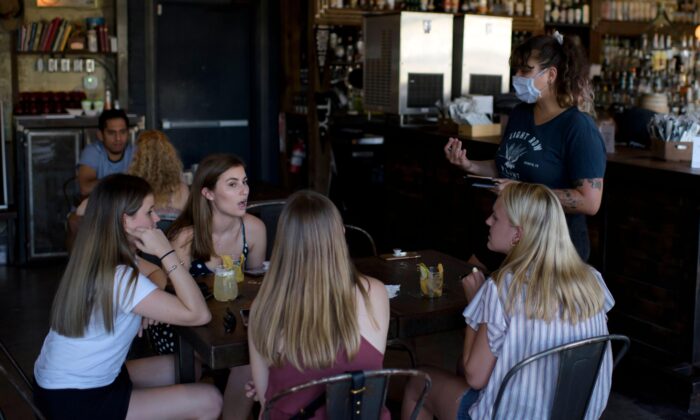Popcorn and Inspiration: ‘Thunderheart’: Acknowledging Spiritual Reality
Texas and Florida, the largest states that started to open up from lockdowns several weeks ago, haven’t seen a rebound of CCP virus infections, government data indicates.
Due to the virus’s incubation period of up to two weeks, the effects of the reopening wouldn’t have been immediately apparent. These states, however, started easing restrictions at the beginning of May. Three weeks later, the states appear to be on a path out of the pandemic.
Experts have predicted that even a phased reopening would cause some increase in the virus’s spread. While there’s some evidence of this phenomenon, the overall trend points to a decline.
The CCP virus, commonly known as the novel coronavirus, broke out in the central Chinese city of Wuhan around November 2019, before spreading throughout the world.
There have been nearly 1.7 million confirmed cases in the United States and over 100,000 deaths attributed to the virus. Nearly half of all cases have been concentrated in a cluster in the northeastern states of New York, New Jersey, Connecticut, Massachusetts, Pennsylvania, and Rhode Island.
Florida and Texas belong to the less affected states, ranking 33rd and 39th, respectively, in the number of per capita cases. Still, each has had over 50,000 residents testing positive, providing a testing ground for the effects of reopening.
Texas
Texas started reopening on May 1 with retail stores, restaurants, movie theaters, and malls allowed to run at 25 to 50 percent capacity. On May 8, hair salons, barbershops, and other beauty parlors were allowed to open. By May 22, restaurants were allowed to fill to 50 percent capacity, and a plethora of businesses, including day-care centers, youth clubs, bars, and bowling alleys, were also allowed to reopen, though with a list of precautionary measures required.
The seven-day average of confirmed daily infections in the state reached a peak at about 1,300 on May 16 and has since declined to 950 on May 26.
Meanwhile, the number currently hospitalized for COVID-19 dropped from a peak of 1,888 on May 5 to 1,534 on May 26 in the state, according to data released by the Texas Department of State Health Services.
The daily numbers of deceased have also decreased from 38 on May 15 to 24 on May 26, based on the seven-day moving average.
Florida
In Florida, the situation is more complicated.
The state started to reopen on May 4, but delayed the move for its most affected counties of Miami-Dade, Broward, and Palm Beach in the south. The first to open were restaurants and retailers, albeit at 25 percent capacity for indoor areas. Starting May 18, restaurants, retail stores, and gyms were allowed to run at half-capacity. Barbershops and beauty parlors were allowed to open too, “while adhering to safety protocols.”
The state’s seven-day average of confirmed daily infections reached about 750 on May 17.
Since then, Florida more than doubled the average number of tests performed daily and was thus expected to detect more cases.
For several days, the numbers of infections went up, but then started to drop again. By May 25, the seven-day average of daily new cases was back to 750, even with twice as many tests conducted.
The percentage of tests detecting a new positive case was 4.5 percent in the seven days ending May 17. In the seven days ending May 25, the rate dropped to about 2.4 percent.
Data from Florida’s Department of Health indicate that the numbers of daily newly reported COVID-19 hospitalizations dropped from the average of more than 180 per day in early April to less than 100 per day in early May and to less than 50 per day in the seven days ending May 24.
The drop in hospitalizations was particularly dramatic between May 13, when 130 were reported, and May 24, when only 21 were reported. It’s likely, though, that the most recent days’ data is incomplete.
The daily numbers of deceased dropped from more than 50 in early April to less than 21 in early May, and finally to less than 3 per day by May 24, based on the seven-day moving average.
Focus News: No CCP Virus Rebound Amid Texas, Florida Reopening
Pompeo Declares Hong Kong No Longer Autonomous From China, Slams Beijing’s Proposed Security Law
